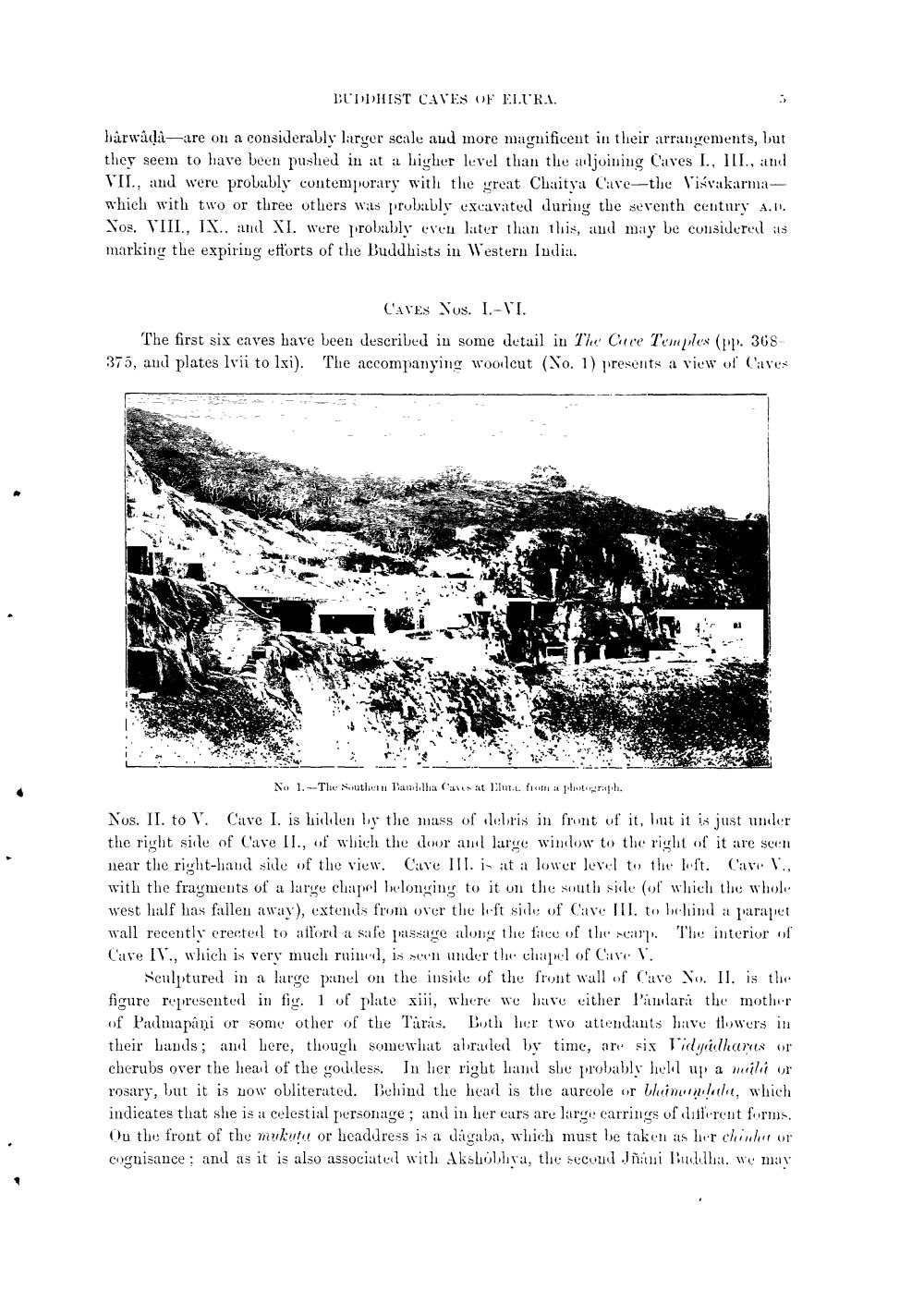________________
BUDDHIST CAVES OF ELUR.1.
hârwadi-are on a considerably laryer scale and more magnificent in their arrangements, but they seem to have been pushed in at a higher level than the adjoining Caves I., III., itd VII., and were probably contemporary with the great Chaitya Cave--the Višvakarmawhich with two or three others was probably excavated during the seventh century A.1). Yos. VIII, IX., and XI. were probably even later than this, and may be considerel its marking the expiring efforts of the Buddhists in Western India.
Caves Xos. I.-II. The first six caves have been described in some detail in The Cure Temples (.368 375, and plates lvii to lxi). The accompanying woolcut (No. 1) presents a view of Caves
G
-..
.
No 1. --The Southern Tanha (vex at Charlotta peterpoh.
Nos. II. to V. Cave I. is hidilen by the mass of debris in front of it, but it is just under the right siile of Cave II., of which the door and larye window to the right of it are seen near the right-hand side of the view. Cave III. is at a lower level to the left. Cave 1'., with the fragments of a large chapel belonging to it on the south sile (of which the whole west half has fallen away), extends from over the left side of Cave III. to blund a parapet wall recently erected to afford a safe passage along the face of the car. The interior of Cave IV., which is very much ruined, is seen under the chapel of Care V.
Sculptured in a large panel on the inside of the front wall of Cave No. II. is the figure represented in fig. 1 of plate xiii, where we have either l'imari the mother of Padmapáni or some other of the Taras. Lyth her two attendants have flowers in their hands; and here, though somewhat abruled by time, are six Vidyalharus or cherubs over the heal of the goddess. In her right hand she probably hell up a mile or rosary, but it is now obliterated. Behind the head is the aureole or bhuinmal, which indicates that she is a celestial personage; and in her cars are large carrings of different forms. Ou the front of the mukutu or headdress is a digaba, which must be taken as her chinhu or cognisance: and as it is also associated with Akshoblova, the second Jõni Buddha, we may




